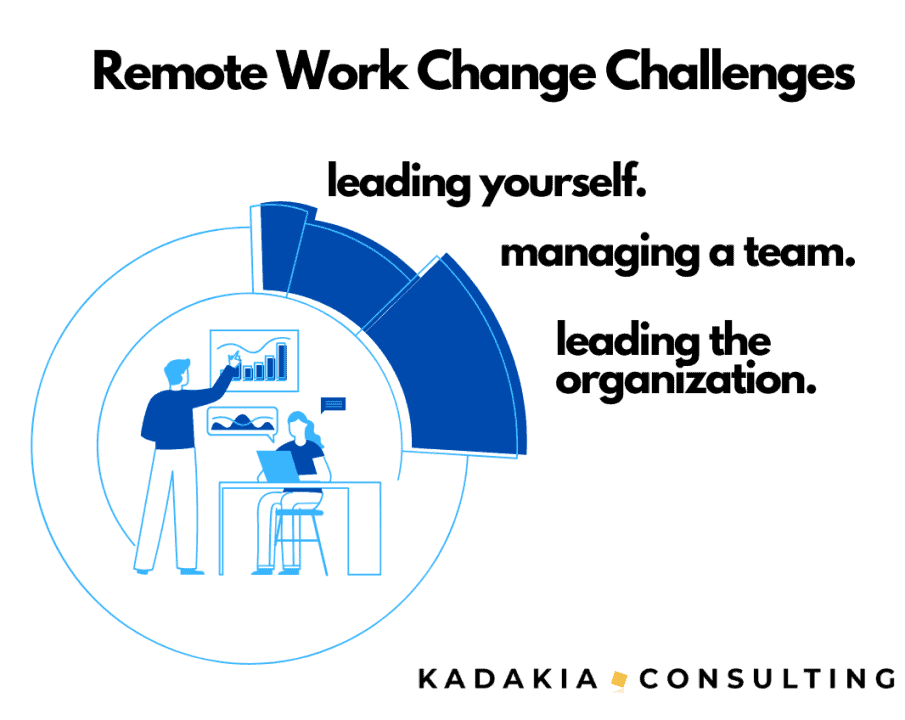
The Coronavirus pandemic has completely changed the work culture dynamic as many of us know it. Social distancing and quarantines have forced countless employees to uproot from their office environments and create a new normal for the foreseeable future — if not permanently. And those are just the lucky ones who get to keep their jobs.
However, for those who have been given this opportunity, there is a silver lining.
To be clear, this is not in any way downplaying the gravity of this global crisis, but to highlight the hidden lessons we can learn from telecommuting if done correctly.
I’ve been working remotely for nearly ten years now after leaving my career in a corporate setting. Although it took some time to make the transition, I can’t imagine going back because of the benefits I’ve gained. Here are some proven ways to improve connection and meaningful work, grow team relationships, and get remote work done at scale, whether you’re a team member, manager, or leader.
*Note: I’ve offered links to example resources I’ve personally found valuable. This is not sponsored content, nor am I responsible for any of the messaging on these sites.
For Leading Yourself:

For many of us, the first challenge is just to manage ourselves. From isolation to structuring the day to dealing with a new work environment, here are some tips to navigate these changes:
Check-In Intentionally. Perhaps the most challenging transition to working remotely is adapting to solitude. Check in regularly over phone or web calls with friends, family and neighbors. Now that you can’t count on running into people organically, make it a point to schedule or just reach out. You can even go old school – hang out in your front yard and wave hello to your neighbors.
Plan Agreements with Your Family. Many of us are struggling with cancelled vacations and having extended time at home with family. Familiarity can breed contempt, even with those we love the most! Have a conversation around how you’d like to use this time together, as well as apart. What are your needs and their needs? Especially with kids, empower them to entertain themselves and keep mentally stimulated. Remember the days of your own childhood for inspiration and consider reaching out to the online tutoring community to help your kids stay on track.
Own Your Day. It’s easy to work too much or not enough when you work remotely because you might not get direction as often. Avoid this trap by holding yourself accountable to plan the day’s work. Strategically set one or two “boulders” and four to five “pebbles” to work on that represent meaningful progress. To help plan your remote work lifestyle, check out this remote work canvas.
Work on Deeper Projects. Use the extra time you now have not commuting or socializing with coworkers for deeper reflection. Start thinking about your big picture goals and meditate on strategic, creative and “being” types of projects. What are all the things you’ve been wanting to do but get too interrupted at the office to focus on? The first thing remote workers often find is just how much MORE they can get done at home.
Maintain a Self-Care Routine. Those of us who are used to the “doing” cycle – get up, go to work, go to the gym, take care of the kids, wash/rinse/repeat – can have all that catch up to us when the regular routines come to a stop. Therefore, to avoid initial fatigue, stick to what worked before. Change out of your pajamas, eat healthy, get up and move around. Self-care is essential to feeling motivated and energized. Avoid the Netflix black hole (although feel free to plan Netflix Parties). Gym closed? Find your favorite workouts on YouTube (I’m personally a big fan of FitnessBlender).
For Leading a Team:
For some of us, not only do we need lead ourselves at home, but we are now responsible for engaging and managing remote teams. From establishing new norms to running remote meetings to learning new ways to build trust and communicate, here’s a few of the most critical practices to establish from the get go:
Re-Establish Team Norms. If you suddenly find yourself managing a team offsite, it is imperative to collectively come to an understanding on how you can best work together. Which communication platforms will you use to reach one another? What are the expectations in terms of communication methods and hours? What will be the regular cadence of check-ins? How will you support one another to meet your goals? Take this opportunity to re-evaluate the team dynamics, as not everything that worked at work works from home. Here’s a great resource to get you started: https://bunch.ai/blog/going-remote-covid-19/
Learn to Manage Virtual Meetings. Build your capability to run virtual team meetings effectively. Turn on those videos during web conference calls. Ensure there’s a system for everyone to share their thoughts by checking in with each person to see where they’re at. Use this time as an excuse to deepen team bonds by sharing a little bit about your home life – be it introducing a pet or family member, or having a “virtual” breakfast or lunch together. Don Pontefract has published a great remote work toolkit to help with team meetings.
Co-Create Direction and Accountability – Group chat threads are a helpful way to feel connected, but one-on-ones are just as important to prevent anything from being taken out of context. Work one-on-one to establish work plans and work flows to connect on progress and support needed. Extend trust. Make culture a priority to avoid feelings of complacency and isolation.
For Leading the Organization:
For a fewer group of us, our work extends across the organization. From establishing remote work systems to communicating to learning from this challenge, here’s how you can maximize the potential in this tough situation:
Set Up Essential Systems. For many organizations, this might be the first time workers are allowed to work remotely. Three items are key to address as soon as possible: cybersecurity, remote communication software, and home office needs. Ensure employees have the know-how to work using secure Wifi and tools to prevent cyberattacks. Bring in strong web conferencing technology like Zoom, WebEx or Google Hangouts to empower remote communications. Finally, address home office concerns. Not everyone will have an equipped home office – how is the company supporting the workforce? For more, check out SHRM’s article for some starting tips.
Practice Communicating with Transparency. As highlighted in this HBR article from Amy Edmonson, focusing on accurate communication of the situation is key to keeping your workforce positively engaged. How you and your leadership communicate during Coronavirus could set a new norm for how future crises are handled and even day to day business changes.
Lead by Example. If you’re not comfortable working remotely and being as effective as you are in person, neither will your workforce. The habits you set now can actually increase your effectiveness back in the office. For example, here’s the story of a CEO who responded “Call Me” to every email for a week and found incredible gains in empathy and team leading.
Be an Innovator. Treat this like a true experiment in the future of work and note your observations as the situation progresses. What resistance has your organization had in the past to telecommuting, if any? What is gained by going fully remote? And what is lost? What benefits of both worlds would you like to capture once this tough time has passed?
Silver Lining
In times of turmoil, disruption can turn out to be a good thing. It’s critical to maintain a glass-half-full mentality and embrace the opportunities that can stem from this. While an unexpected hardship, this is also an ideal time to experiment. We are all in this together, and your community wants you to succeed.
Use this time to learn about your own work style and maybe even learn new ways of feeling engaged and effective that you can take back with you live at work. I’ve personally already seen people reaching out more than when we were physically present – the possibility for better is here! Let’s turn social distancing into a social solidarity that we can bring back to work in the future.
© 2020, Crystal Kadakia; Invati Consulting, LLC
Hear more from Crystal
COMING SOON: An online course authored by Crystal Kadakia, Managing Millennials & Gen Z: Demystifying and Engaging Modern Talent

